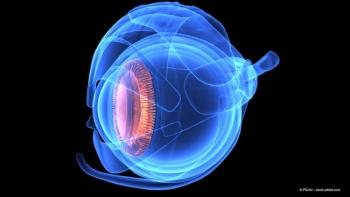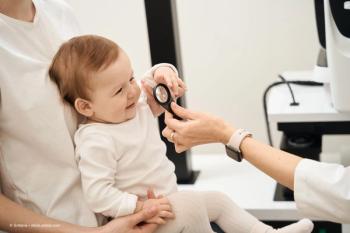
Retinal nonperfusion reveals advanced diabetic eye risk
Ultra-wide field imaging shows nonperfusion and leakage independently predict diabetic retinopathy progression, suggesting earlier treatment with anti-VEGF or photocoagulation may prevent complications.
Yasha S. Modi, MD, associate professor of ophthalmology at NYU Langone Health, discusses highlights from his presentation, "Retinal Nonperfusion in
"What we were looking at was really to go and say, relative to the DRSS, kind of like the gold standard for diabetic retinopathy staging, is there value in looking at leakage and nonperfusion? And whether you look at the posterior pole or the far periphery–sort of has that which has been described in the DRC, our protocol, Protocol AA," Modi said.
"What we see is that by ultra-wide field FA, both nonperfusion and leakage, independent of the diabetic retinopathy scoring system, carries an increased risk of progressing to more advanced forms of diabetic retinopathy. So this becomes clinically relevant when you think you have somebody with what would otherwise be moderately severe or very severe NPDR, and in order to really, truly understand their risk, I believe that we probably need imaging in the form of ultra wide field imaging and perhaps earlier treatment, whether that's in the form of anti-VEGF medications or panretinal photocoagulation before a complication occurs."
The research builds on decades of ophthalmological understanding, tracing back to the ETDRS findings in 1991 that identified leakage and nonperfusion as risk factors. Modern imaging technologies now allow for more precise identification and potential targeted treatments.
"So when we think about anti-VEGF and its effect on nonperfusion, I think there's a really interesting literature that we learned by looking back at clinical trials. And from the earliest RISE and RIDE studies, which FDA-approved ranibizumab for the treatment of diabetic macula edema, what we have learned is that when you give anti-VEGF on a monthly basis, nonperfusion remains relatively stable, as opposed to the sham arm, where nonperfusion continues to grow," Modi said.
"Now, if you look at Charlie Wyckoff's study from recovery, he asked the question, is it dose dependent? In other words, if you're injecting the medication on a quarterly basis versus a monthly basis, is there some value in doing it less frequently? And the answer is that nonperfusion continued to progress when you gave aflibercept every quarter, but when you give it every month, it appeared to have some stabilizing effects on nonperfusion.
The caveat is that at no point in time in any study have we been able to definitively demonstrate a improvement to nonperfusion. So whatever level of nonperfusion we start with, that's effectively what we're going to end with in the best case scenario. But it does sort of provide some sort of evidence to say that anti-VEGF may modulate progression of nonperfusion when given very frequently, but doesn't reverse it."
Key findings include the potential for earlier intervention through ultra-wide field imaging. When patients exhibit classic signs like four dot plot hemorrhages, two quadrants of venous speeding, and one quadrant of Intraretinal Microvascular Abnormalities (IRMA), clinicians should immediately pursue advanced imaging.
Newsletter
Keep your retina practice on the forefront—subscribe for expert analysis and emerging trends in retinal disease management.















































